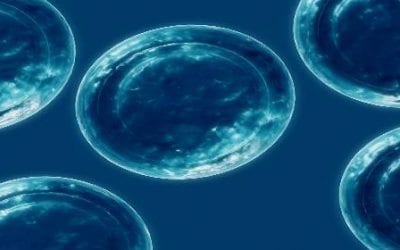Stemedix Regenerative Medicine Research and Health Awareness Blog
Stay up to date with the latest developments in regenerative medicine research and treatment. Subscribe to our newsletter.
The Importance of Health and Fitness at All Ages
Wednesday, May 29th was National Senior Health & Fitness Day. While health and fitness are important at every age and every day, making efforts to stay active and promote wellness as we age is especially important. Exercise can support healing, disease prevention,...
Could Gut Bacteria Influence Mental Health?
Within recent years, there has been increasing evidence to suggest gut bacteria plays a powerful role in many aspects of health. The microbiome, or microbial communities within our intestinal tract, have been a suspected agent behind many chronic conditions. Now, one...
Allogeneic Stem Cell Therapy for Lupus Nephritis Patients
Systemic lupus erythematosus or simply “lupus” is a chronic inflammatory disease that can affect almost every organ and tissue in the body. Most people are aware of chronic fatigue, muscle and joint pain, and a characteristic facial skin rash that occurs in people...
Can Hemp Extracts Aid in Chronic Pain Management?
Nowadays, you wouldn’t have to look very far to find advertisements for products containing hemp seed extract, or CBD oil. But how is this popular new solution made, and does it deliver on its promises to ease pain? Let’s explore what the compound consists of and how...
Modulating the Immune System with Mesenchymal Stem Cells: Looking Beyond Bone Marrow
Mesenchymal stem cells have two unique and powerful properties that make them the focus of intense scientific research. First, mesenchymal stem cells can escape recognition by the immune system. In other words, when mesenchymal stem cells are infused into the body,...
What Is Macular Degeneration & How Can You Prevent It?
Age-related macular degeneration (AMD) is the most common cause of vision loss and affects more than 10 million people across the U.S., which is more than both glaucoma and cataracts combined. The condition is characterized by the deterioration of the central retina,...
Umbilical Cord Mesenchymal Stem Cells Show Promise in the Treatment of Multiple Sclerosis
A new study has shown that a protocol for treating Multiple Sclerosis with stem cells is safe. According to the researchers, the potential for using stem cells in Multiple Sclerosis therapy warrants further investigation. The results of the study were published in the...
Mesenchymal Stem Cell Options for Erectile Dysfunction
Erectile dysfunction is the most common sexual disorder among men. During an erection, blood enters the tissues within the penis and is temporarily trapped there. In erectile dysfunction, however, this process does not occur. A man who suffers from this condition is...
What is the Arthritis Diet?
While arthritis is a chronic condition for which there is no cure, certain dietary changes can help to alleviate its symptoms by reducing inflammation, improving bone strength, and boosting the immune system. Following the anti-inflammatory arthritis diet recommended...
Mesenchymal Stem Cells in the Treatment of ALS
Amyotrophic lateral sclerosis or ALS is a neurological disease that causes muscle weakness, profound disability, and ultimately death. ALS is sometimes referred to as Lou Gehrig's disease, named for the New York Yankee baseball player who developed the condition later...
Can Cannabis Help Manage Symptoms of Parkinson’s Disease?
Recently a video went viral in which a man with Parkinson’s disease (PD) tries cannabis for the first time, placing a drop of cannabinoid oil (CBD oil) under his tongue. Within minutes, his symptoms improve significantly: the dyskinesia (involuntary muscle movements)...
Hyperbaric Oxygen Therapy Improves Cognition after Traumatic Brain Injury by Increasing Stem Cells
Traumatic brain injury (TBI) encompasses a wide range of injuries, neurological problems, and outcomes. On one end of the spectrum is a concussion, which can be mild and short lasting. At the other end of the spectrum, traumatic brain injury can be lethal or leave...













 St. Petersburg, Florida
St. Petersburg, Florida
